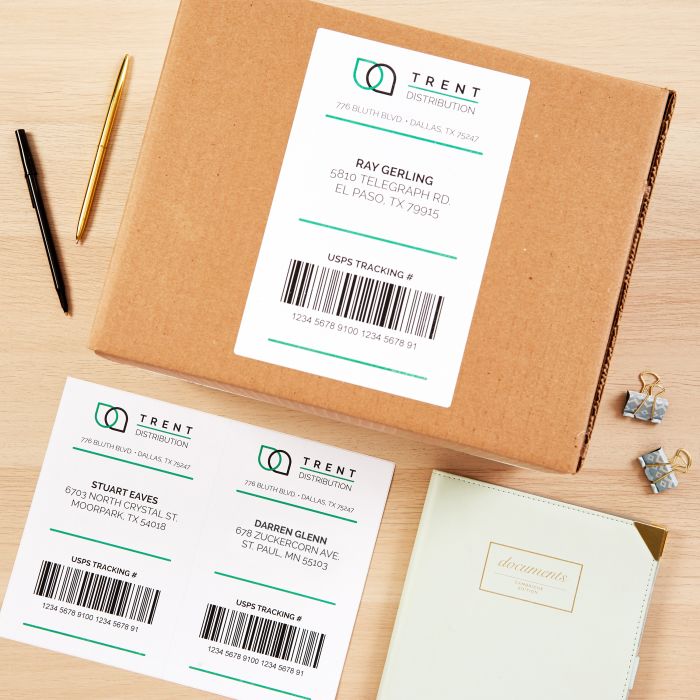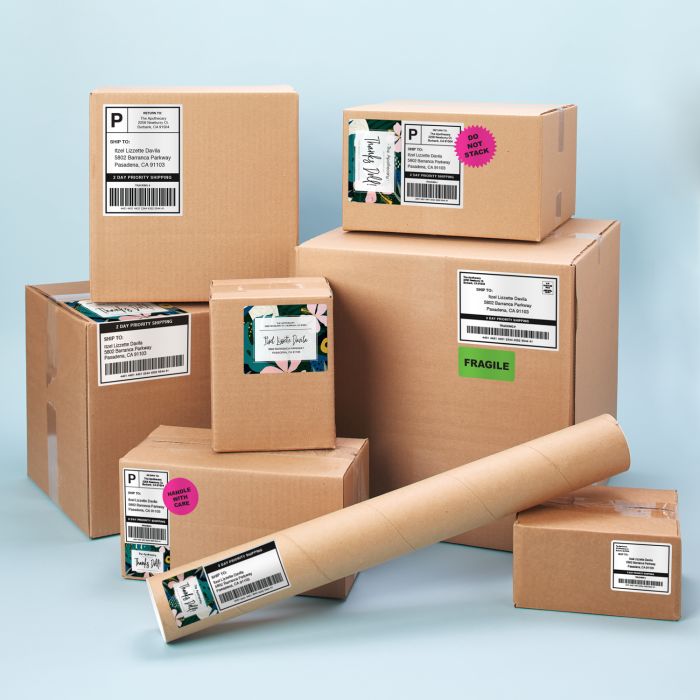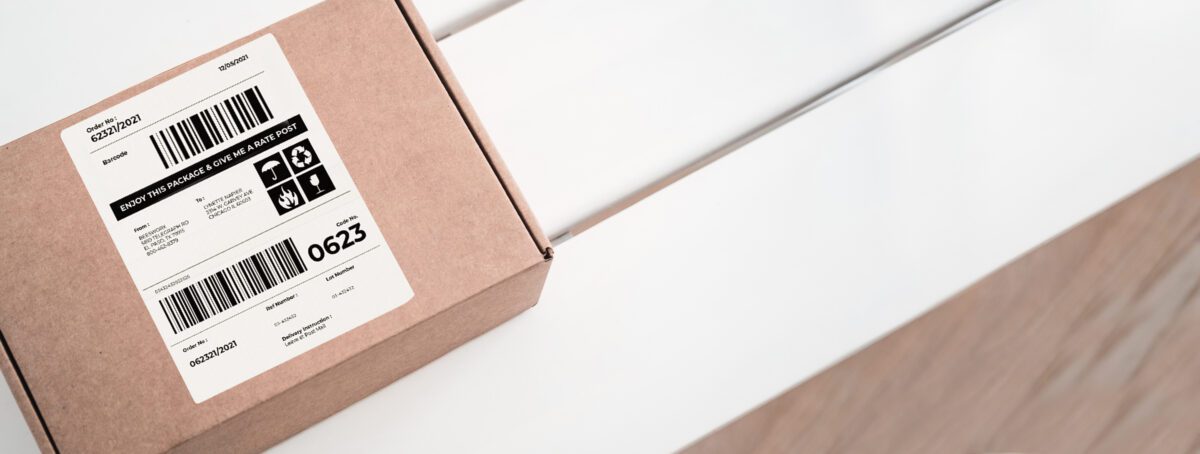Other articles you might like:
What do you need on shipping labels and why?
We all see shipping labels every day but most people don’t understand how a shipping label transports a package from point A to point B. Each section of a shipping label identifies and sorts packages so routing is successful.
In this article, we’ll explain how shipping labels work. Some of the label parts are more important than others but they all play a role in making sure that your packages arrive at their destination safely.
The basic anatomy of a shipping label includes a return address, a destination address, the shipping date, weight, shipping priority, and a tracking number. There are also specific items that delivery services use but these are the core sections you need for your shipping label to work. In this article, we’ll go through every part of the shipping label to help you understand why they’re important, and some common mistakes to avoid.
When you’re ready to buy shipping labels, Avery offers several ways to order superior shipping labels online. You can buy printable shipping labels by the sheet, our popular retail packs, or order custom shipping labels professionally printed by Avery WePrint.


Parts of a shipping label
Return Address
The return address will return your package if delivery isn’t possible. In most cases, this will be the address of your business. However, if your business is outsourcing its shipping to a third party, you would use their address in this section.
Destination Address
The destination address shows where the package is going. Include the full ZIP code to ensure proper routing. And include apartment numbers, company names, and titles for smooth delivery.
Shipping Date
This is the date the package begins its travel through the delivery process. Although the address and tracking information is vital, the shipping date provides another source of data for delivery services to reference at a glance. Along with the shipping class, the shipping date helps mail carriers confirm that the package is traveling on time.
Package Weight
A package’s weight determines the total shipping cost and its sorting. The loading of packages for delivery is by weight and size so trucks and containers balance properly. Improperly weighed packages can result in damage and extra charges to shipment.
Shipping Class
The shipping priority for the package determines the shipping speed. The names of these classes can vary among delivery services but they almost always communicate the speed clearly. For example, UPS Next Day Air® is comparable to FedEx Standard Overnight®. Every delivery service offers multiple levels of shipping and it’s helpful to look through all of the options they have available to see what works best.
Tracking Numbers and Barcodes
Tracking numbers monitor packages during transportation. When a delivery service scans a barcode, it connects with its tracking system and notes that the package is moving. Carriers have unique tracking codes that are only for their service. For instance, you can’t use the FedEx® website to track a UPS® package.
Optional and Miscellaneous
You can also include shipping costs, proprietary barcodes, and postal barcodes on shipping labels. This information varies by delivery service. And always make sure to clearly display the entire shipping label. If you need to make your own barcode labels you can use the free barcode generator from Avery.
Shipping Label FAQs
It’s highly recommended that you ship packages by the “ship by” date used when the tracking information is created. There are some delivery services that may still accept your packages after this date but this can result in complications.
When a shipping label is generated, it alerts the carrier that they should be expecting a package. When the package isn’t shipped out on the ship-by date, it can cause carriers to search for nonexistent packages. And it can also cause consumers frustration when their package doesn’t arrive on time.
The information for a shipping label will usually require a 4″ x 6″ space but the exact dimensions can vary depending on the delivery service you choose. Avery internet shipping labels are 5-1/2″ x 8-1/2″ to accommodate various templates and to provide some extra margin around the shipping information for safety.
Although most scanners will still be able to detect barcodes as long as the color is dark enough, it’s safer to provide the highest contrast possible with black ink on white material.
Shipping labels should be placed on the largest and most visible flat surface of your package. Placing labels over seams or edges can cause the label to warp during transit and can potentially render it unreadable.
It’s not recommended for tape or any other material to be placed over the barcode on a shipping label. More modern scanners can detect the code but tape can cause problems with older model scanners.
Unreadable or missing addresses are the most common cause of lost packages. Make sure you use labels that print clearly and have strong adhesive.




